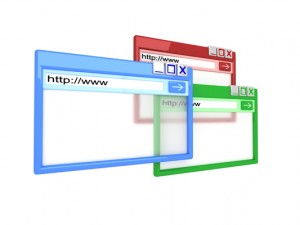Using the Internet for personal purposes in the workplace is causing a dip in employee productivity and costing money for the business owner.
Internet abuse constitutes an issue due to the fact that the browsed content raises ethical questions and often the sites visited are not allowed through office policies.
This is in addition to the fact that the time and frequency of accessing the Internet compromises productivity.
What constitutes Internet abuse?
Workplace Internet abuse is a significant risk factor for employer liability, costing employers’ valuable hours of work.
Internet abuse ranges from viewing pornography in private  offices to spending hours on social sites, playing online games, shopping online and paying bills through the company Internet.
offices to spending hours on social sites, playing online games, shopping online and paying bills through the company Internet.
Other consequences of improper Internet use include litigation, such as sexual harassment, hostile work environments and discrimination.
Revoking privileges
One way to deal with this problem is to entirely remove Internet access. Unfortunately, such a decision has the negative effect of punishing those who don’t abuse the privilege.
In addition, it’s impossible to completely banish personal Internet usage when the business relies heavily on Internet for communication, research and up-to-date information.
Monitoring usage
One way to reduce employer liability is to monitor and filter employee Internet use.
Although there are disagreements about the principle behind Internet monitoring, many employers agree that it is a necessary ‘evil.’
This solution requires some investment and changes in the networking infrastructure but can provide an almost immediate Return on Investment (ROI).
A phased implementation approach works best. Let your employees know you’re making a change, implement, and then give them a few days to adjust.
It is also necessary to draft an Acceptable Use Policy (AUP), implementing rules of personal Internet use before implementing such a change.
If you want to discuss internet monitoring solutions for your business, please give us a call for a free assessment.
(Image Source: iCLIPART)

 Every website can be improved, however good it is. In fact, you never want to settle for ‘good enough,’ particularly if your website is part of a business.
Every website can be improved, however good it is. In fact, you never want to settle for ‘good enough,’ particularly if your website is part of a business.
 may forget to back up data on machines outside of the company premises.
may forget to back up data on machines outside of the company premises.
 by Lino Perna,Technician
by Lino Perna,Technician Traveling is rarely guaranteed to go smoothly, but there are at least a few travel headaches that can be kept at bay thanks to technology. If you know how to make use of it in the proper manner, technology can increase your likelihood of having a positive experience on your next vacation.
Traveling is rarely guaranteed to go smoothly, but there are at least a few travel headaches that can be kept at bay thanks to technology. If you know how to make use of it in the proper manner, technology can increase your likelihood of having a positive experience on your next vacation.
 by Jeremy Miller, Technician
by Jeremy Miller, Technician
